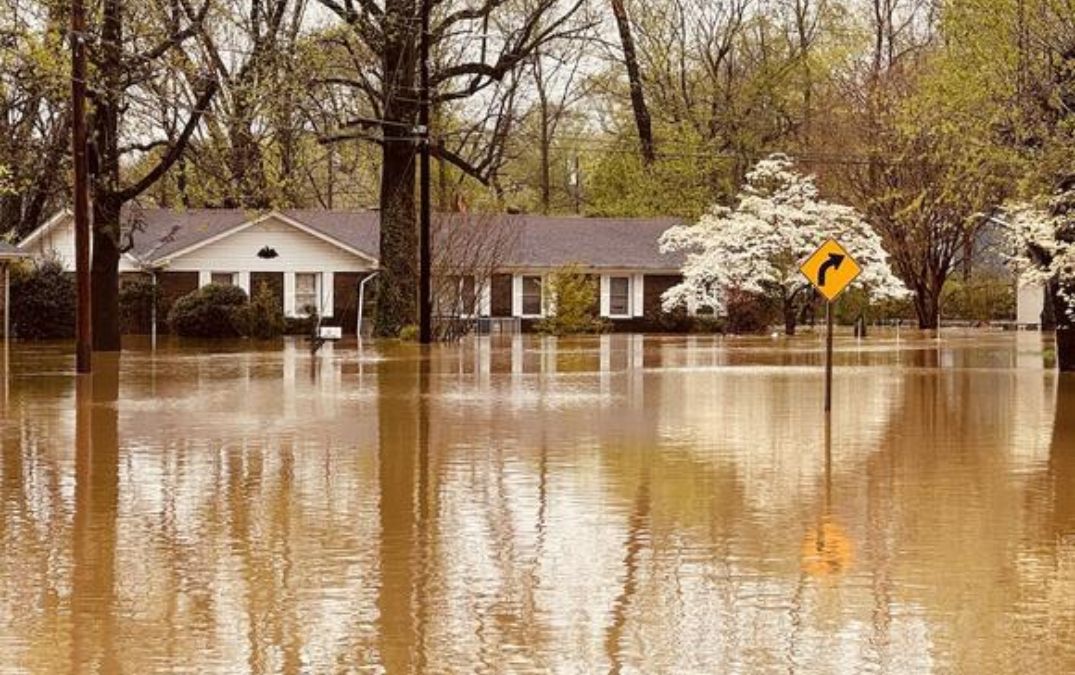As Hopkinsville residents once again battle high water and uncertainty, we’re left asking the same question our community has asked time and again: How does this flood stack up against the infamous ones of the past?
It’s almost eerie that this question mirrors one posed in a Kentucky New Era article back in December 1978 — also on a Friday — following yet another Little River swell. Fast-forward to today, after more than 14 inches of rainfall in just four days, and we find ourselves reliving history.
With the thunder still echoing from last night’s storm and streets left soaked and shuttered, I turned to old news archives in search of perspective. While the full impact on homes, businesses, and farms is still being assessed, there’s no denying that this is one for the history books.
A Flood-Prone Past
Local journalist Joe Dorris chronicled Hopkinsville’s flood history for decades in his beloved “Watching the Parade” column. Dorris — more than just a sports editor — was a hometown storyteller, capturing the heart of our city’s rhythms, routines, and rainstorms.
In a column dated Dec. 12, 1972, Dorris reflected on the worst floods to hit Hopkinsville during the 20th century. Among the most notable:
- 1900 to 1926: Repeated downtown flooding, including high water in 1900, 1906, 1913, 1919, and 1926.
- The Great Flood of 1937: Over 20 inches of rain fell, isolating the city and displacing at least 40 families. Fields in South Christian remained waterlogged into summer.
- 1949 Valentine’s Flood: Roughly 75 families had to evacuate.
- 1957 Flood: Triggered by 9.5 inches of rain in five days, with damages estimated at $2 million.
These devastating events prompted the reconstruction of Tandy and Morris lakes and the development of Blythe and Boxley lakes in the 1960s, designed to curb future flooding.
Measuring the Waterline of History
Locals used to measure floods by how far the water crept up Ninth Street. The floods of 1906 and 1913 reportedly reached Ninth and Liberty, while those in 1949 and 1957 only reached the Princess Theater — a detail that’s less straightforward than it seems, given the elevation changes over the years due to repaving.
As Southern Exposure’s Tony Kirves pointed out from his vantage point at Ninth and Main on Friday, floodwaters still find familiar paths to travel — a stark reminder of the river’s persistent threat.
Modern Measures and Lingering Risks
More recent floods in 1997 and 2005 added urgency to stormwater planning. They were key moments that led to the city establishing the Hopkinsville Surface and Stormwater Utility — an effort to control flooding in a city that’s no stranger to rising waters.
Though I’ve always watched these events from the sidelines — covering the damage or helping friends haul out waterlogged belongings — this week, like so many others, I felt the weight of uncertainty that floods bring.
As local businesses scrambled to sandbag their storefronts and protect their livelihoods, it was clear: the Little River still carries a mighty presence in our lives.
The city remains under a flood warning through tonight, but better weather may finally be on the way. The National Weather Service promises a sunny Monday — a much-needed reprieve after days of deluge.











